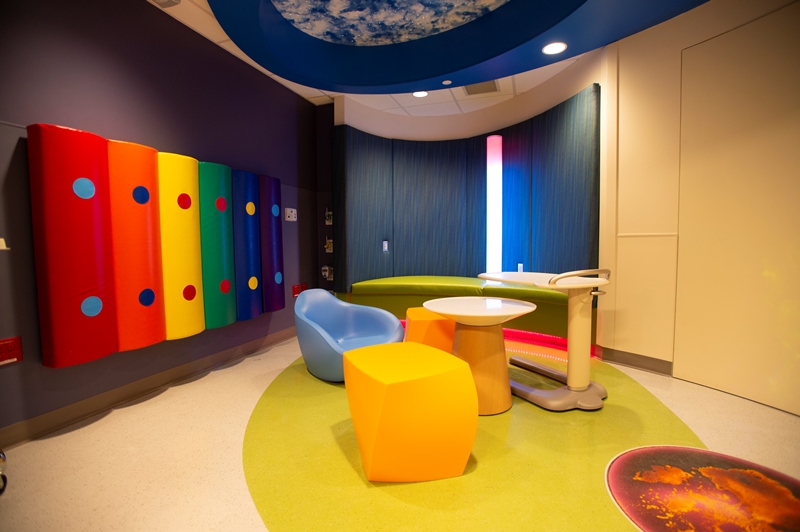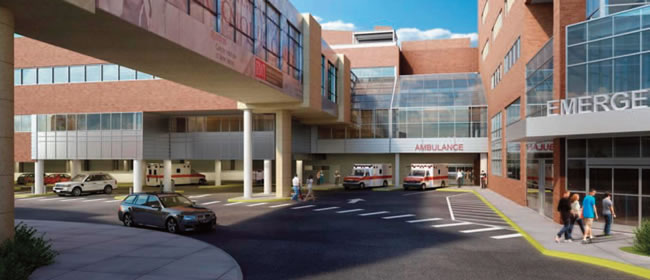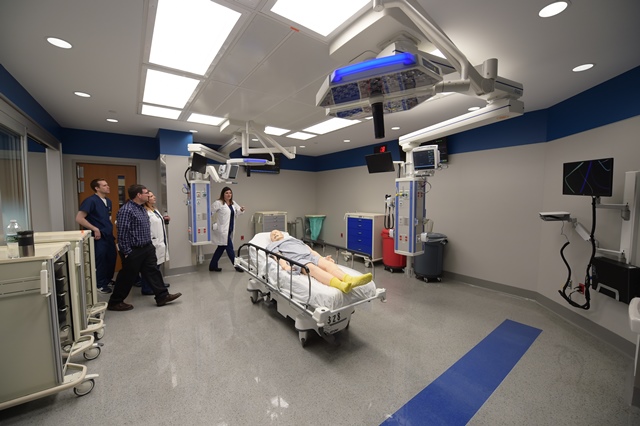Emergency Department in New Brunswick
Urgent Care Near You
Welcome to the Robert Wood Johnson University Hospital (RWJUH)
Emergency Department. Our objective is to meet the acute medical needs
of our patients. The Emergency Department offers urgent care to everyone,
24 hours a day, every day of the year. We care for more than 95,000 emergency
department and trauma patients annually.
As one of only three Level I Trauma Centers in New Jersey, an academic medical center, and a state and regional leader in emergency and trauma care, RWJUH regularly addresses some of the most serious illnesses and traumatic injuries in the state. Due to our Level I Trauma Center and Level II Pediatric Trauma Center verifications and the fact that our academic medical center offers many specialty services and destination therapies available at only a small number of elite institutions nationally, patient demand continues to grow for RWJUH's services.
No one is asked to pay before receiving emergency care. We will always care for patients with emergency medical problems, even if they cannot pay. Patients will receive bills after services are provided. Information about Charity Care is available upon request.


New and Enhanced Facilities Enable More Efficient Service
In November 2019, the hospital opened a new Emergency Department.

- Our facilities now feature more than 100 private treatment areas, including three additional new trauma bays.
- The new ambulance bay can accommodate eight ambulances at one time.
- The expanded space enables us to offer a fast-track option for patients who arrive at the department with less emergent diagnoses.
- Radiology imaging is now available right inside the Emergency Department, which can potentially reduce wait times for test results.
- Separate adult and pediatric sensory rooms help patients with autism and anxiety disorders relax during emergency department visits.

A Dedicated Pediatric Emergency Department
RJWUH provides a unique Pediatric Emergency Department that is specially designed to meet the urgent care needs of children and their families.
When children arrive in the RWJUH Emergency Department, they’ll be met by a pediatric triage nurse who will assess their condition. Pediatric surgeons are always available to perform emergency surgery. Specially trained nurses, technicians, and child life specialists provide a warm, friendly atmosphere, easing children’s fears and helping them feel more secure.
- Learn more about the Pediatric Emergency Department’s breadth of services, including our moderate sedation service, which could enable procedures that used to require hospital admission to be done right in the Emergency Department.
- Read about how our dedicated pediatric sensory room helps keep kids calm in the Emergency Department.
Our moderate sedation service sets us apart from other emergency departments. With moderate sedation, we are able to perform painful procedures, such as fracture reduction or wound repairs, right in the ED without hospitalization. Children can come in with a bad fracture or injury, have it repaired and go right home; often no visit to the operating room is necessary!
How It Works: Visiting the Emergency Department

To properly care for our patients, we employ a four-step process: triage, registration, examination, and admission or discharge.
Step 1: Triage
We use a triage system to identify your condition and determine how urgent it is. A triage nurse will want to know as much about your problem as possible and will ask you many questions. The more you can tell the nurse, the better we can take care of you.
Upon completion of the triage process, you will be escorted to one of the three treatment areas of the Emergency Department: Non-Urgent Care Center, Urgent Care Center, or Emergent Care Center.
Step 2: Examination
A doctor, physician assistant, and a nurse will provide a thorough examination and order and perform tests to help treat your problem.
Step 3: Registration
A registration clerk will come to your bedside to complete the registration process. Proof of identification and insurance information will be requested.
Step 4: Admission or Discharge
The doctor will make a decision to admit you to the hospital or send you home after treatment in the Emergency Department. If a decision is made to admit you, we may need to wait for a bed to become available to treat your specific problem. If you are discharged, you will receive verbal and written instructions regarding the final diagnosis given, the medications prescribed, and the appropriate follow-up required.
There are many people working in the Emergency Department who can help you. You may ask to speak to the charge nurse, head nurse, social worker, critical care technician, or patient representative.
Visiting Patients in the Emergency Department
We know how helpful visitors can be for patients and for the people taking care of them. We welcome visits from family or loved ones. We try to permit visits at all times of the day. We do ask that only one person be with the patient at a time in all three areas of the Emergency Department. You may switch visitors at any time.
Please feel free to use the Emergency Department lobby to wait, take a break, or speak to other concerned family members or friends of the patient. There are times in the Emergency Department when we may need to ask that all visitors temporarily go out to the waiting area. These times are usually related to crowded conditions and seriously ill patients. Be assured that when this happens you will be told when you may return just as soon as it is possible.
If you have questions or would like to provide feedback on emergency department services, please call (732) 828-3000.
